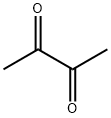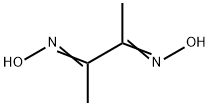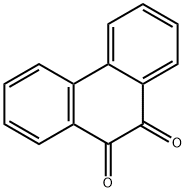2,3-Butanedione , Analysis of standard products, ≥99.0%(GC) , 431-03-8
Synonym(s):
2,3-Butanedione, 2,3-Butadione, Dimethyldiketon, Dimethylglyoxal;Biacetyl;Diacetyl
CAS NO.:431-03-8
Empirical Formula: C4H6O2
Molecular Weight: 86.09
MDL number: MFCD00008756
EINECS: 207-069-8
PRODUCT Properties
| Melting point: | -4--2 °C |
| Boiling point: | 88 °C(lit.) |
| Density | 0.985 g/mL at 20 °C |
| vapor density | 3 (vs air) |
| vapor pressure | 52.2 mm Hg ( 20 °C) |
| FEMA | 2370 | DIACETYL |
| refractive index | n |
| Flash point: | 45 °F |
| storage temp. | Store at +2°C to +8°C. |
| solubility | 200g/l |
| form | Liquid |
| color | Clear yellow |
| Odor | at 1.00 % in propylene glycol. strong butter sweet creamy pungent caramel |
| Odor Type | buttery |
| explosive limit | 2.4-13.0%(V) |
| Odor Threshold | 0.00005ppm |
| Water Solubility | 200 g/L (20 ºC) |
| Merck | 14,2966 |
| JECFA Number | 408 |
| BRN | 605398 |
| Exposure limits | ACGIH: TWA 0.01 ppm; STEL 0.02 ppm NIOSH: TWA 5 ppb; STEL 25 ppb |
| Stability: | Stable. Flammable. Incompatible with acids, strong bases, metals, reducing agents, oxidizing agents. Protect from moisture and water. Note low flashpoint. |
| InChIKey | QSJXEFYPDANLFS-UHFFFAOYSA-N |
| LogP | -1.340 |
| CAS DataBase Reference | 431-03-8(CAS DataBase Reference) |
| NIST Chemistry Reference | 2,3-Butanedione(431-03-8) |
| EPA Substance Registry System | 2,3-Butanedione (431-03-8) |
Description and Uses
2,3-Butanedione, also known as Diacetyl, is a reactive diketone in artificial butter flavors. It is a water-soluble and volatile, alpha-diketone compound that has a buttery odor. Diacetyl occurs naturally in plants, fruits, coffee, honey, cocoa, and dairy products. It is a natural by-product of fermentation and is found in beer and wine. Diacetyl is also present in cigarette smoke.
Diacetyl can be synthesized by converting 2-butanone to an isonitroso compound and then hydrolyzing it with hydrochloric acid. Other methods for producing diacetyl include oxidation of 2-butanone over a copper catalyst at 300°C and dehydrogenation of 2,3-butanediol over a copper or silver catalyst. In addition, diacetyl can be synthesized through the acid catalyzed condensation of 1-hydroxyacetone and formaldehyde. Naturally occurring diacetyl is also available from starter distillate, a by-product of dairy product fermentation. Although diacetyl and starter distillates are liquids, they can be converted to a powdered form by encapsulating them within a solid material to prevent volatility. Diacetyl in powdered form is also found in flavorings that have been spray dried. The boiling point of diacetyl is 88°C with a calculated vapor pressure of 55 mmHg at 20°C.
2,3-Butanedione is a flavoring agent that is a clear yellow to yellowish green liquid with a strong pungent odor. It is chemically synthesized from methyl ethyl ketone. It is miscible in water, glycerin, alcohol, and ether, and in very dilute water solution it has a typical buttery odor and flavor. It is used as Carrier of aroma of butter, vinegar, coffee, and other foods. It is also used Inactivates aminopeptidase-N, precursor to α-diones, Cyclocondensation with amines has been used to form triazine and pteridine ring systems.
Safety
| Symbol(GHS) |     GHS02,GHS05,GHS06,GHS08 |
| Signal word | Danger |
| Hazard statements | H225-H302-H315-H317-H318-H331-H373 |
| Precautionary statements | P210-P280-P301+P312-P304+P340+P311-P305+P351+P338-P314 |
| Hazard Codes | F,Xn |
| Risk Statements | 11-20/22-38-41-36/38-20/21/22-37/38 |
| Safety Statements | 9-16-26-37/39-36/37/39-39 |
| RIDADR | UN 2346 3/PG 2 |
| WGK Germany | 2 |
| RTECS | EK2625000 |
| F | 13 |
| Autoignition Temperature | 365 °C |
| TSCA | Yes |
| HazardClass | 3 |
| PackingGroup | II |
| HS Code | 29141990 |
| Hazardous Substances Data | 431-03-8(Hazardous Substances Data) |
| Toxicity | LD50 orally in rats: 1580 mg/kg (Jenner) |
| Limited Quantities | 1.0 L (0.3 gallon) (liquid) |
| Excepted Quantities | Max Inner Pack (30g or 30ml) and Max Outer Pack (500g or 500ml) |





